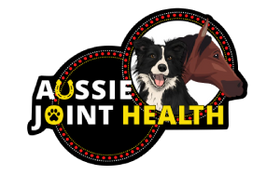Canine Osteoarthritis
Osteoarthritis is a degenerative disease that affects the synovial joint, synovial fluid, cartilage, and bone. One in five dogs will experience arthritis in their lifetime. It usually starts slowly, causing inflammation in the joints, then progressively causing the cartilage and joint fluid to break down. When this occurs, it causes bone-on-bone rubbing.
There are three different types of joints
Fibrous
Cartilaginous
Synovial
There are four stages of Osteoarthritis
Stage 1
Minor bone spurs start to develop
Cartilage breakdown begins
Cartilage lesions can occur, causing friction, inflammation, and pain
Stage 2 (Mild)
Erosion of the bone due to cartilage lesions
More bone spur growth
Natural proteoglycan loss of the articular cartilage
Stage 3 (Moderate)
Thinning of cartilage between the bones
Narrowing the space between the bones
Stage 4 (Severe)
Joint space dramatically reduced
Cartilage loss is almost gone
Reduced joint mobility
Recognize The Symptoms Of Canine Arthritis.
- Difficulty Climbing stairs
- Stiffness in the legs when walking
- Unexpected aggression
- Lameness in the joints
- Inflammation in the joints
- Licking and chewing at joints and paws
- Difficulty jumping up and down things
- Being lethargic
- Not wanting to be touched or cuddled
- Shifting posture
- Yelping when touched
- Muscle loss
Early detection can be the key to further damage and treatment of osteoarthritis.
Treatment of canine osteoarthritis
There are numerous treatments available for managing osteoarthritis.
Prescribed pharmaceutical drugs
Experimental treatment
Nutraceutical supplements (Canine Joint Plus)
Changes in lifestyle, such as weight loss and physical exercise, can also be beneficial.
DISCLAIMER
All information on the Aussie Joint Health website is for educational purposes only. There is no diagnosis or treatment intended for individual animals in the Aussie Joint Health content. It is imperative that you address any questions or concerns you may have about your animal with your veterinarian. The information provided on Aussie Joint Health should not replace your relationship with your veterinarian. This blog post is intended to help you have a better conversation with your veterinarian about the appropriate treatments to use for your pet.

